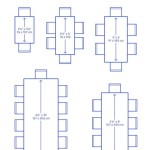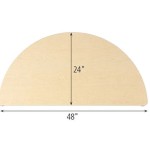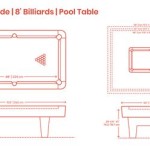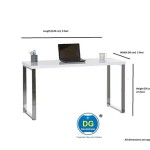Metal Legs For End Tables: A Comprehensive Guide
End tables serve as versatile and essential pieces of furniture in living rooms, bedrooms, and even offices. They provide convenient surfaces for lamps, books, drinks, and decorative items, enhancing both the functionality and aesthetics of a space. The legs of an end table play a crucial role in its overall design, stability, and durability. Metal legs, in particular, offer a range of benefits that make them a popular choice for both contemporary and traditional furniture styles.
The use of metal in furniture construction dates back centuries, initially employed for structural support and later incorporated for decorative purposes. Modern advancements in metalworking techniques have expanded the design possibilities and material choices available for metal legs, leading to a wide array of styles, finishes, and functional features.
This article will delve into the various aspects of metal legs for end tables, exploring their advantages, different types of metal used, design considerations, installation methods, and maintenance requirements. Understanding these factors will enable informed decisions when selecting metal legs for either building a new end table or upgrading an existing one.
Advantages of Using Metal Legs
Metal legs offer several significant advantages over other materials, such as wood or plastic. These benefits contribute to the longevity, stability, and aesthetic appeal of end tables.
Durability and Strength: Metal is inherently a strong and durable material, capable of withstanding significant weight and stress. Metal legs provide robust support for end tables, ensuring they can safely hold various items without sagging or breaking. The inherent strength of metal makes it resistant to cracking, warping, and other forms of damage that can occur with wood or plastic over time. This durability translates into a longer lifespan for the end table, making it a worthwhile investment.
Stability: The rigidity of metal contributes to the overall stability of an end table. Metal legs provide a solid and unwavering base, minimizing the risk of wobbling or tipping over, even on uneven surfaces. This stability is particularly important for end tables used in high-traffic areas or those that hold delicate or valuable items. The precise manufacturing processes used in creating metal legs ensure consistent dimensions and alignment, further enhancing stability.
Design Versatility: Metal legs can be fabricated into a wide range of shapes, sizes, and styles, offering extensive design versatility. From sleek and minimalist designs to ornate and decorative patterns, metal can be adapted to complement various interior design aesthetics. The ability to manipulate metal allows for the creation of unique and eye-catching leg designs that can significantly enhance the overall look of an end table. Metal can also be combined with other materials, such as wood or glass, to create visually interesting and complementary designs.
Variety of Finishes: Metal legs are available in a multitude of finishes, allowing for customization to match the existing décor or create a specific aesthetic. Powder coating, painting, plating, and polishing are common finishing techniques that can alter the color, texture, and sheen of the metal. Powder coating provides a durable and scratch-resistant finish, while plating offers a luxurious and corrosion-resistant surface. Polishing can create a bright and reflective surface, adding a touch of elegance to the end table. The availability of diverse finishes allows for seamless integration with different design styles.
Resistance to Pests and Moisture: Unlike wood, metal is resistant to damage from pests such as termites and woodworms. It is also less susceptible to moisture damage, preventing rot and decay. This resistance makes metal legs a suitable choice for environments with high humidity or those prone to pest infestations. However, some metals are susceptible to corrosion, so appropriate finishes and coatings are necessary to protect them from rust and other forms of degradation.
Types of Metal Used for End Table Legs
The specific type of metal used for end table legs significantly impacts their strength, appearance, and cost. Different metals possess distinct properties that make them suitable for various applications.
Steel: Steel is a popular choice for end table legs due to its high strength, durability, and affordability. It is an alloy of iron and carbon, with varying amounts of other elements added to enhance specific properties. Steel legs are typically coated or finished to prevent corrosion. Mild steel is commonly used for its weldability and formability, while stainless steel offers superior corrosion resistance. The robust nature of steel makes it ideal for supporting heavy items and withstanding daily wear and tear.
Aluminum: Aluminum is a lightweight and corrosion-resistant metal that is favored for its ease of fabrication and aesthetic appeal. Aluminum legs are often used in modern and contemporary designs. While not as strong as steel, aluminum provides sufficient support for many end table applications. Its lightweight nature makes it easy to move and handle. Aluminum can be anodized to create a durable and decorative finish, offering a range of colors and textures.
Iron: Wrought iron is a traditional material used for decorative metal legs. It is known for its ornate designs and rustic charm. Cast iron is another form of iron that can be molded into intricate shapes. Iron legs are typically heavier and more expensive than steel or aluminum legs. They require regular maintenance to prevent rust and corrosion. Iron legs are often used in vintage or farmhouse-style interiors.
Brass: Brass is an alloy of copper and zinc, prized for its warm golden color and resistance to corrosion. Brass legs add a touch of elegance and sophistication to end tables. They are often used in high-end furniture designs. Brass can be polished to a high shine or left to develop a natural patina over time. While more expensive than steel or aluminum, brass offers a unique aesthetic appeal that can enhance the overall look of an end table.
Copper: Copper is a reddish-brown metal known for its excellent conductivity and resistance to corrosion. Copper legs can add a distinctive and industrial touch to end tables. Copper is often used in modern and bohemian-style interiors. Like brass, copper can be polished to a high shine or left to develop a natural patina. Copper legs are relatively soft and may require reinforcement for heavy-duty applications.
Design Considerations for Metal Legs
Selecting the right metal legs involves careful consideration of design factors to ensure they complement the style of the end table and the surrounding décor. These factors include the shape, size, style, and finish of the legs.
Shape and Size: The shape and size of the metal legs should be proportionate to the table top and the overall dimensions of the end table. Common leg shapes include straight, tapered, angled, hairpin, and pedestal. Straight legs provide a classic and minimalist look, while tapered legs add a touch of elegance. Angled legs can create a mid-century modern vibe, while hairpin legs offer a retro and industrial feel. Pedestal legs provide a stable and substantial base. The height of the legs determines the overall height of the end table, which should be appropriate for its intended use and the height of adjacent furniture.
Style: Metal legs should complement the overall style of the end table and the surrounding décor. Sleek and minimalist metal legs are well-suited for modern and contemporary interiors, while ornate and decorative metal legs are better suited for traditional or vintage-style interiors. Industrial-style interiors often feature metal legs with visible welds and a raw, unfinished look. The style of the legs should also be cohesive with the design of the table top, whether it is made of wood, glass, or stone.
Finish: The finish of the metal legs should complement the color scheme and the overall aesthetic of the space. Powder coating offers a wide range of colors and a durable, scratch-resistant finish. Plating, such as chrome or nickel, provides a shiny and reflective surface. Painting allows for customization with specific colors and textures. The finish should also be chosen based on the environment in which the end table will be used. For example, a powder-coated finish is more resistant to moisture and corrosion than a painted finish in a humid environment.
Attachment Method: The method used to attach the metal legs to the table top is a crucial design consideration. Common attachment methods include screws, bolts, and welding. Screws and bolts are relatively easy to install and allow for disassembly if needed. Welding provides a strong and permanent connection. The attachment method should be chosen based on the weight of the table top and the anticipated load on the end table. It is important to use appropriate hardware and techniques to ensure a secure and stable connection.
Weight Capacity: The weight capacity of the metal legs should be sufficient to support the table top and any items placed on the end table. It is important to consider the maximum weight that the end table is likely to hold and choose legs that can safely support that weight. Exceeding the weight capacity of the legs can lead to instability and potential damage. Metal legs typically have a higher weight capacity than legs made of other materials, such as wood or plastic.

Ohiowoodlands End Table Base Steel Accent Legs Metal

Metal Coffee Table Legs Modern Base

Steel Bench Legs Coffee Table Metal Base Set Of 4

C Table Legs Pedestal Leg Console Sofa Coffee End Side Metal Singapore

Ohiowoodlands End Table Base Steel Accent Legs

Walnut End Table With Metal Legs Blue Ridge Log Works

18 In Skyline Matte Black Square Metal High Rise Coffee Or End Table Pipe Decor

Bench Legs W13 X H16 For Small Coffee Table 103 Haru End 2 Pcs Flowyline Steel Design Industrial

Homekayt Metal Table Legs Heavy Duty T Shape Iron Desk Industrial Furniture Dining Modern Coffee Office 2pcs 16 H X 17 7 W Triangle Yahoo Ping

Metal End Table Legs For Ohiowoodlands Steel








